The Gaza Crisis We’re Not Talking About
There is disturbing evidence of a sustained Israeli campaign of sexual violence against men and boys.
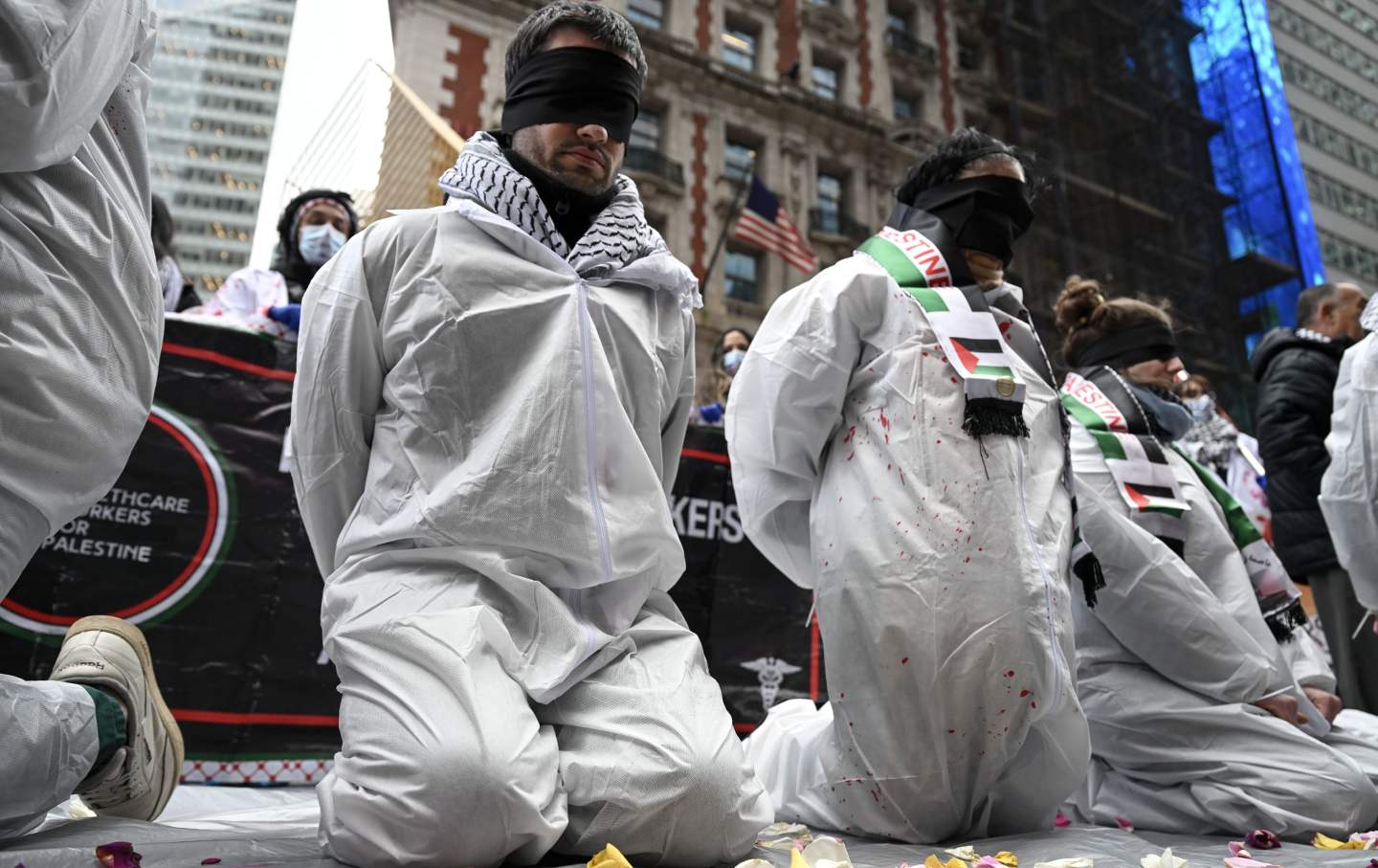
Demonstrators gather in Times Square in support of Palestinians on April 5, 2024.
(Fatih Aktas / Anadolu via Getty Images)Over the last few months, I’ve settled into a new morning routine. I heat the tea kettle, arrange the mint teabag and a sliced lemon on the counter, then take a seat at the small table in my kitchen. There, I open my phone and confront the unfolding horrors in Gaza.
One morning, the top of my feed showed, without warning, images of detained Palestinian men and boys—some as young as 12 years old—stripped to their underwear, blindfolded, handcuffed, and marshaled by the Israeli military.
While scrolling through the news coverage and the outrage on social media, I noticed that much of the discourse failed to see these images for what they were: clear-cut evidence of sexual violence.
Despite being documented in more than two dozen international conflicts, conflict-related sexual violence (or CRSV) against men and boys remains relatively under-discussed. These cases are difficult to identify and are rarely acknowledged as war crimes—which in turn, reproduces harmful gendered norms that view women as the only plausible victims of CRSV.
Over the last seven months, reports on Gaza have mostly centered on women and children. There are clear reasons for this: At the time of this writing, women and children constitute nearly 70 percent of the total death toll in Gaza since October 7. Not only have the bombardments displaced nearly 1 million Gazan women and girls, but they have also severely disrupted maternal, infant, and child health services through the destruction of health facilities and restrictions to water and electricity supplies, as well as access to food and medicine.
However, to understand the scope of the sexual and reproductive health threats occurring in Gaza, we must also illuminate how those very harms are inflicted upon and affect Palestinian men and boys.
Since October 7, more than 4,000 Palestinian men, women, and children have been detained in Gaza. In March, the UN reported that 1,002 Palestinian detainees (872 men and 26 boys) who had been released had alleged being brutally beaten, forced to remain in prolonged stress positions (a man was forced to sit on an electrical probe, causing burns to his anus), and/or sexually assaulted (beatings of the genitals and groping).
Last week, a report from CNN, leaked by Israeli whistleblowers, alleged gruesome tactics of torture against Palestinian detainees at the Sde Teiman military base in the Negev desert. One of the released detainees from the camp was Dr. Mohammed al-Ran, the head of the surgical unit at Gaza’s Indonesian Hospital, who recalled being blindfolded, involuntarily stripped, piled on top of other nearly naked men, and sometimes forced to witness torture inflicted on other detainees. Dr. al-Ran recounted the words of a fellow detainee who asked him to find his wife and let her know that “it’s better for them to be martyrs…than to be captured and held here [in the camp].”
As I looked at the images from Gaza, my mind flashed back to 2017, when I worked with Syrian and Afghani refugees in Detroit. I’d often hear stories of survivors of sexual violence—both men and women—during their time escaping from armed conflict. These experiences have shaped my career in public health, which is centered on sexual and reproductive health rights, including gender-based violence, among vulnerable populations. Perhaps it was my professional background that instantaneously acknowledged the images as an example of what CRSV against men can look like. Or perhaps the images triggered a childhood memory—one formed in the aftermath of another genocide.
It was 1999, and I couldn’t resist eavesdropping on my mother and a group of women she had invited over for Arabic coffee. Guests would often request that their coffee grounds be read, a practice known as tabseer, which served as a form of fortune-telling. After a few minutes, my mom picked up Farida’s cup. She was a neighbor who had settled in our town after being displaced during the ethnic cleansing in the former Yugoslavia.
After a few pensive minutes, my mom grabbed Farida’s hand and said, “There’s a young boy with the letter ‘H’…” Farida’s eyes had a kind of sadness that I can only describe as mourning someone who is still alive. She let out a cry that sounded like it had been buried within her and was struggling to get out. I later learned that “H” was Hakim, who in 1992, at the age of 19, was taken from a village in Kosovo, stripped to his underwear, brutally beaten, and sexually threatened by Serbian soldiers.
This type of violence against men has long been neglected as a subject of discourse, despite the historical evidence showing that it is a common occurrence.
CRSV against men and boys has been documented in more than 25 different armed conflicts, suggesting that its incidence is much higher than presumed. In one concentration camp in Sarajevo, 80 percent of the male detainees were reportedly raped. During the Rwandan genocide, Tutsi men and boys were often castrated and forced to have sex with HIV-positive women. A 2018 United Nations report on the genocide in Myanmar showed that men and boys were subject to rape, genital mutilation, and sexual torture. Reports from Syria show that young men, boys, and transgender women are victims of sexual violence, including sexual slavery, where detained people are held captive and used to “satisfy the sexual needs” of authorities.
Several studies over the years have shown the negative health consequences for male survivors of CRSV, including incapacity to sexually perform with their partners, genital and anal fissures, urinary and fecal incontinence, memory loss, post-traumatic stress disorder, depression, and suicidal ideations.
But if the evidence is clear, so are the reasons evidence gets overlooked. Interviews with judges and lawyers from the International Criminal Tribunal for the former Yugoslavia (ICTY) revealed that many of them held patriarchal as well as misogynistic views of survivors and were influenced by their own cultural norms when examining CRSV cases.
Patriarchy positions men as the pillars of not only their families but also their communities. Thus, when a man becomes a victim of sexual violence, he is often deemed to have been emasculated, aligning with the gender that is socially and culturally deemed “inferior.” For example, many of the judges at the ICTY, a majority of whom were men, dismissed cases where the victims of sexual violence were men and expressed that they viewed female victims as fragile, something that made the judges uncomfortable to ask questions. This reluctance to hear testimonies hinders many survivors from speaking up.
Many ethnic communities also hold tightly to the idea that female survivors of CRSV are deemed more worthy of empathy because of the disproportionate weight given to their physical and cultural ties to their virginity. Moreover, heteronormativity serves to silence men by linking male-on-male rape to homosexuality and using both to shame and stigmatize survivors, especially in settings where accusations of homosexuality carry serious consequences, social and familial ostracism. (In his memoir, Nate Leipciger, a Holocaust survivor from Poland, recounts being repeatedly sexually assaulted by Nazi authorities while detained, and his difficulty in breaking his silence.)
There’s also a lack of social and legal services specific for male survivors. Medical professionals, NGO representatives, and other providers who serve populations impacted by armed conflict are often not trained or able to recognize or acknowledge the physical and psychological harms of sexual violence in men.
Although sexual violence as a genocidal tactic was reviewed for the first time in the 1990s at the International Criminal Tribunals for the former Yugoslavia and for Rwanda—a large effort led by feminist coalitions—legal assessment of CRSV remains predominantly female-centered, a view shaped by the insurmountable evidence showing that women and girls are disproportionally harmed by CRSV.
It wasn’t until the 2013 United Nations Security Council Resolution 2106 that CRSV against men and boys was explicitly recognized in international law. Yet even with the passing of the resolution, international justice processes continue to code CRSV against men and boys as torture instead of recognizing the sexual nature of the crime. This has influenced the sentencing of the perpetrators as well as the legal understanding of sexual violence as consisting of only rape.
Reducing CRSV to only rape not only ignores the many ways people can be sexually victimized and harmed but also restricts survivors from recognizing their experiences as such, which also influences their decision to report their experiences. Ní Aoláin, an Irish human rights lawyer, has noted that legal assessments must recognize that CRSV also consists of connected harms, which include cases where men are involuntarily stripped, sexually threatened during interrogation, subjected to “boy play” (sexual slavery), forced to masturbate, forced to witness their family members being sexually assaulted, and forced to commit a sexual assault on someone—often a family member.
I think back to Hakim, and how his family did not receive any aid as refugees beyond food and temporary shelter. I think of his mother and wonder how many Palestinian mothers are holding the same kind of pain and grief for their living sons. I also reflect on my experiences volunteering with CRSV survivors in Michigan and their perception of mental health services. They’d express concerns about when to seek out help, worry about what their neighbors might say, or even try to brush their experiences off by, for instance, saying they were lucky not to get raped.
Popular
“swipe left below to view more authors”Swipe →Israel’s tactics of sexual violence against men and boys in Palestine are not new. A July 2023 report from Save the Children showed that 69 percent of Palestinian children have been involuntarily stripped and searched by the Israeli military; some reported abuse of a sexual nature.
In 2021, a 15-year-old Palestinian boy was detained by Israeli soldiers in occupied East Jerusalem. According to Defense for Children documents, the boy was blindfolded, interrogated, and subjected to physical violence, raped with an object, and beaten repeatedly on his genitals. In a 2015 study detailing testimonies from Palestinian men and boys who had been interrogated by Israeli authorities, various forms of sexual violence were noted, including verbal sexual threats and humiliation, forced stripping, physical assault, and rape. The study also noted that only a few survivors submitted their testimonies in court; however, despite the evidence, the Israeli perpetrators were never convicted.
Palestinian men and boys who suffer this kind of abuse also have to contend with the racism that so often blinds people to their experiences. The depictions of Arab and Muslim men as savages, terrorists, and abusers systematically displace them from the narrative of the victim, which in turn, questions the survivors’ innocence. This project was evident as media sources began to question whether Palestinian men and boys who were involuntarily stripped and abused were civilians or terrorists. It appears that the Israeli military has solidified the impression that these are full-grown Palestinian men, after outrage on social media that led to more questions about mass detention and who the men are. It was later in December that children were found to be among the detainees. The series of events continued, with more news sources reporting that Israel’s treatment of Palestinian detainees amounted to torture.
The hierarchization of the forms of sexual violence and its targets are found widely in academic journals, research, and reports from humanitarian agencies, which in turn influence funding calls and policies that aim to address and mitigate sexual violence. Moreover, the “perfect victim” script of CRSV, which depicts the perpetrator as the aggressive male soldier and the victim as the innocent female civilian, often dictates how humanitarian and human rights agencies and public health practitioners collect CRSV data in armed conflict settings and respond to the cases through policies and interventions. Unfortunately, these approaches have resulted in a systematic erasure of male CRSV survivors.
We must move past binary assumptions of gender and CRSV and recognize sociopolitical and cultural forces perpetuating CRSV against men. This isn’t to diminish women’s experiences but to emphasize the importance of acknowledging and supporting often-overlooked male survivors. International bodies such as the ICC and ICJ, along with organizations like the UN and policymakers, must integrate evidence from armed conflict settings into the frameworks for addressing gender-based sexual violence. This is crucial not only for broadening our understanding of CRSV but also for crafting just and ethical responses. Despite many advances over the years, international law continues to fail CRSV survivors, especially men and boys.
By this time in my routine, the water is spilling aggressively from the tea kettle. As on-the-ground footage from Gaza and the West Bank continues to spread, I shudder at the thought of ruin left in the wake of a genocide.
I think a lot about the endurance and the pressure Palestinian men and boys are experiencing. Their courage in sharing their testimonies, despite the looming threat over their lives, weighs heavily on my mind. As I see these same images now, reoccurring months later, it is clearer than ever that there is a pressing need to take concrete steps to stop this sexual violence, even if the path forward remains murky.
More from The Nation
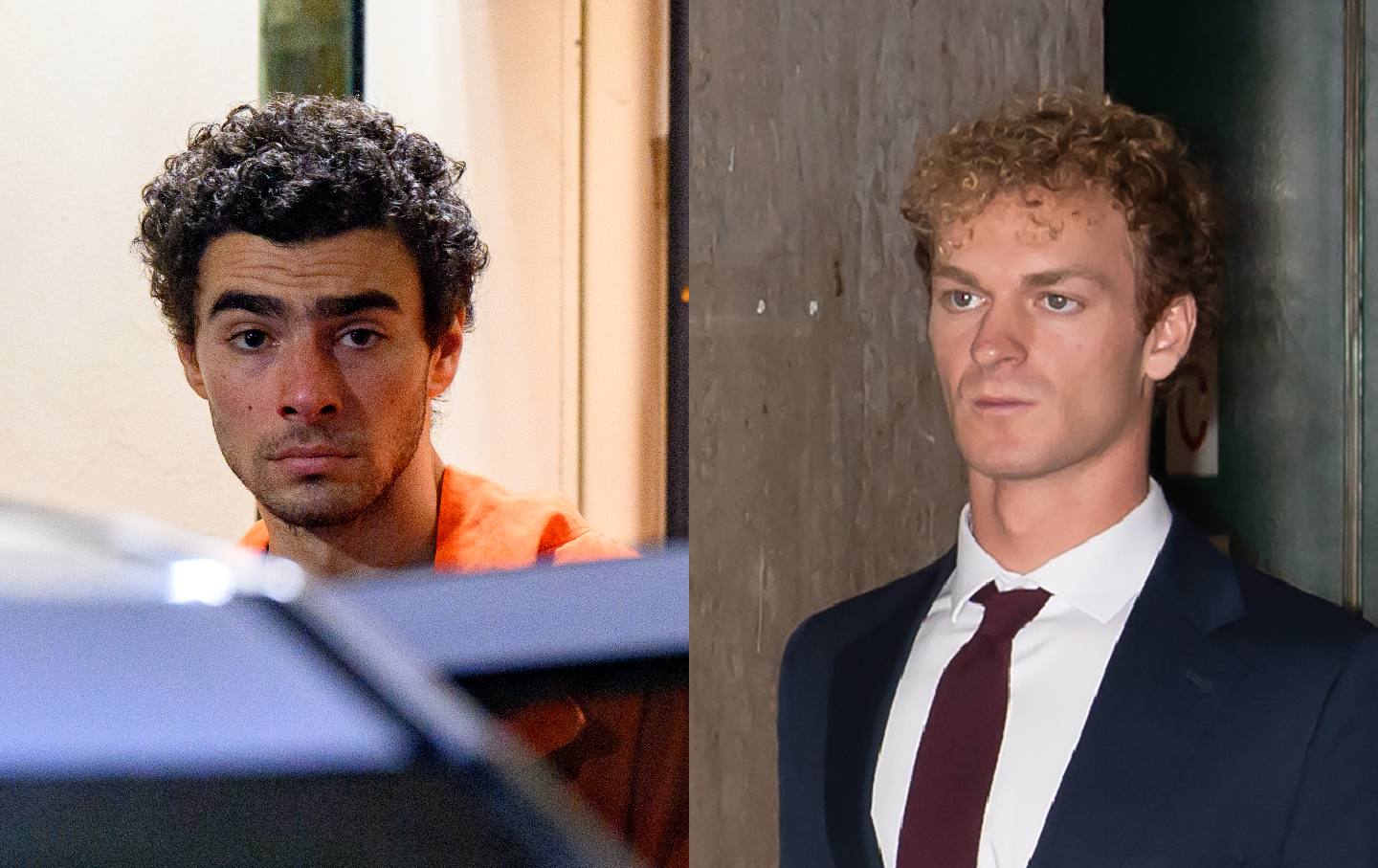
What Luigi Mangione and Daniel Penny Are Telling Us About America What Luigi Mangione and Daniel Penny Are Telling Us About America
When social structures corrode, as they are doing now, they trigger desperate deeds like Mangione’s, and rightist vigilantes like Penny.
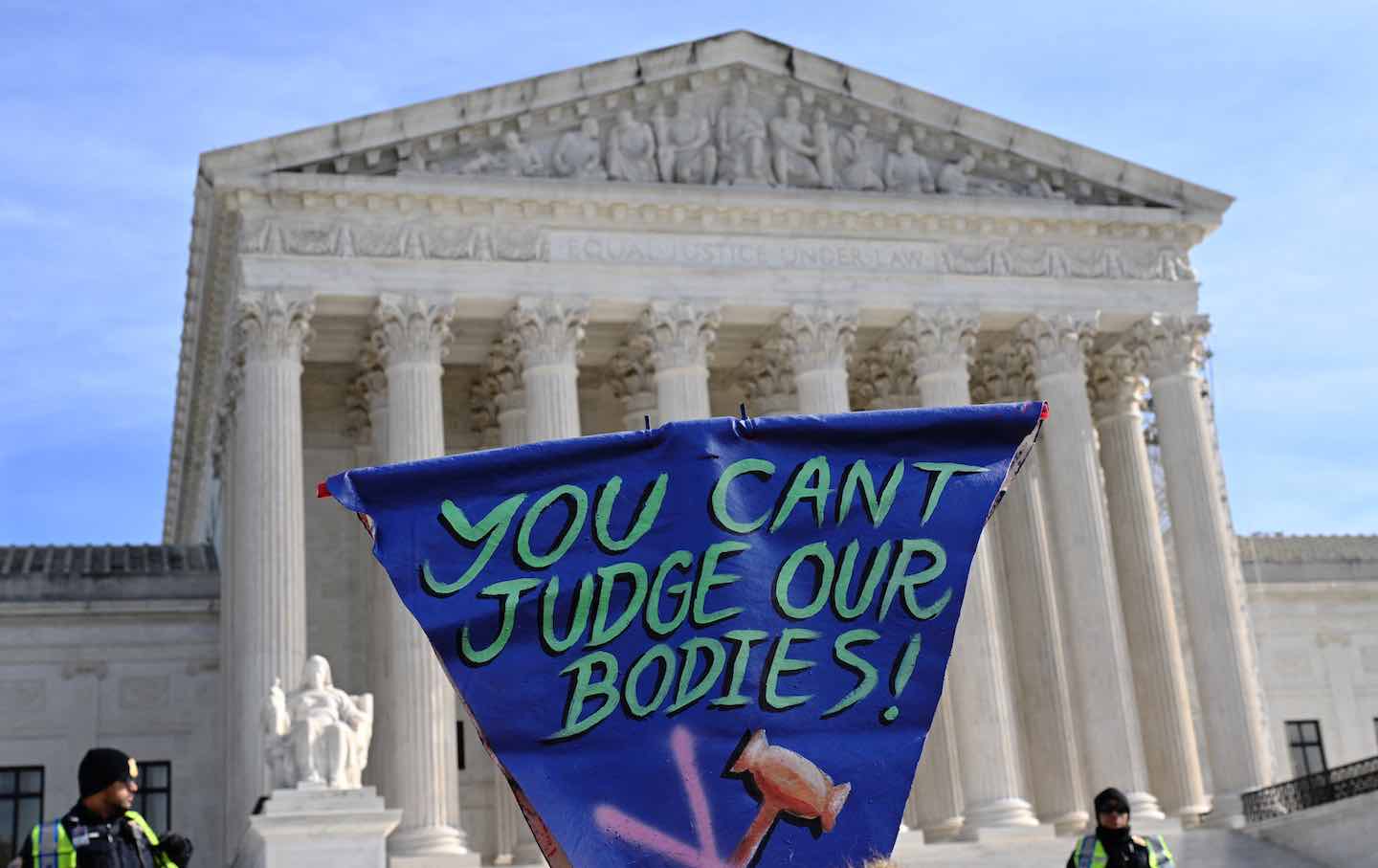
Banning Trans Health Care Puts Young People at Risk of Harm Banning Trans Health Care Puts Young People at Risk of Harm
Contrary to what conservative lawmakers argue, the Supreme Court will increase risks by upholding state bans on gender-affirming care.

It’s Still Not Too Late for Biden to Deliver Debt Relief It’s Still Not Too Late for Biden to Deliver Debt Relief
Four years after hearing the president promise bold action on student debt, most borrowers are still no better off, and many—especially defrauded debtors—are measurably worse off....
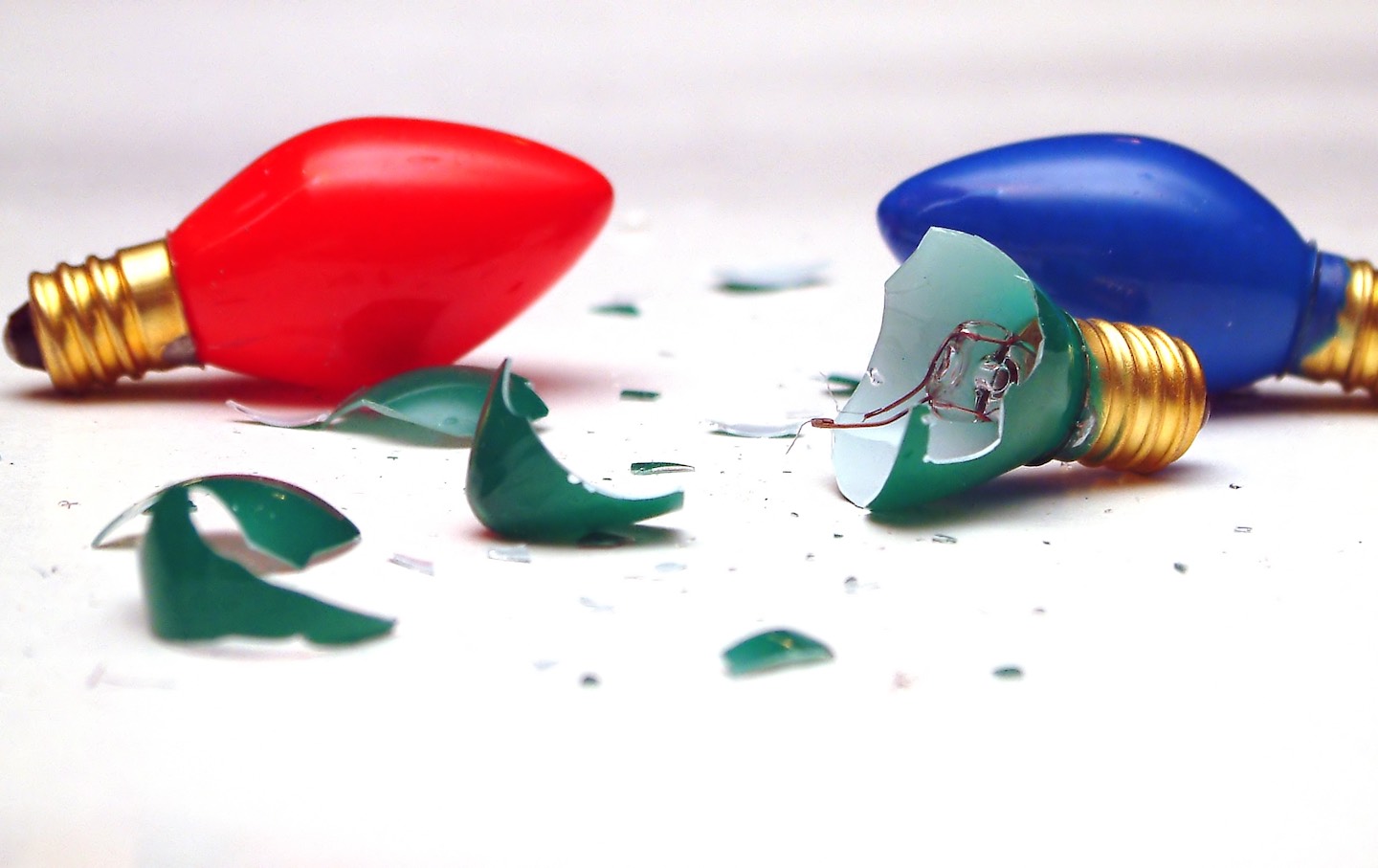
It’s Been a Tough Year. Let’s Help Each Other Out. It’s Been a Tough Year. Let’s Help Each Other Out.
There may be a dark shadow hanging over this year’s holiday season, but there are still ways to give to those in need.
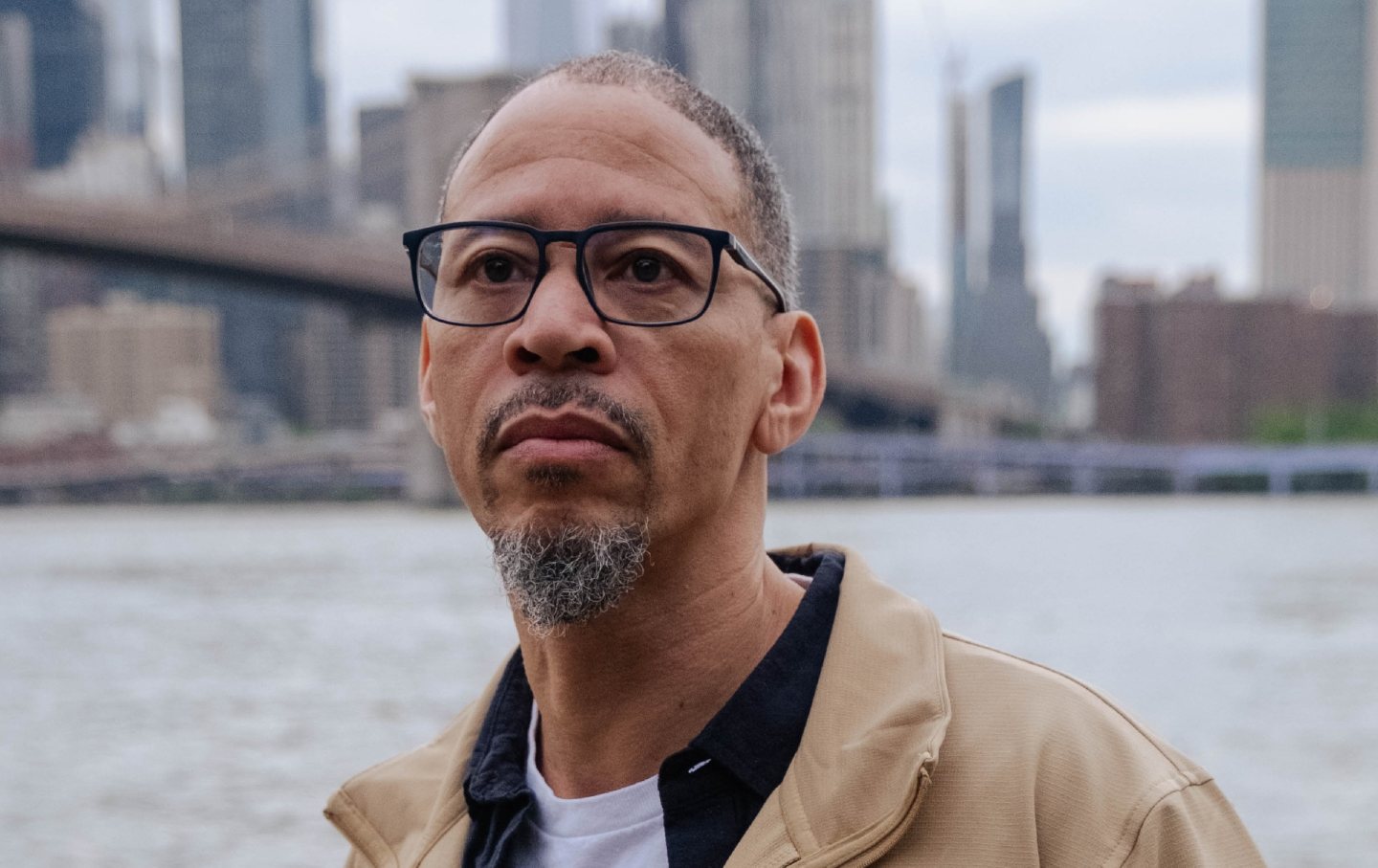
Prison Journalism Is Having a Renaissance. Rahsaan Thomas Is One of Its Champions. Prison Journalism Is Having a Renaissance. Rahsaan Thomas Is One of Its Champions.
Thomas and his colleagues at Empowerment Avenue are subverting the established narrative that prisoners are only subjects or sources, never authors of their own experience.
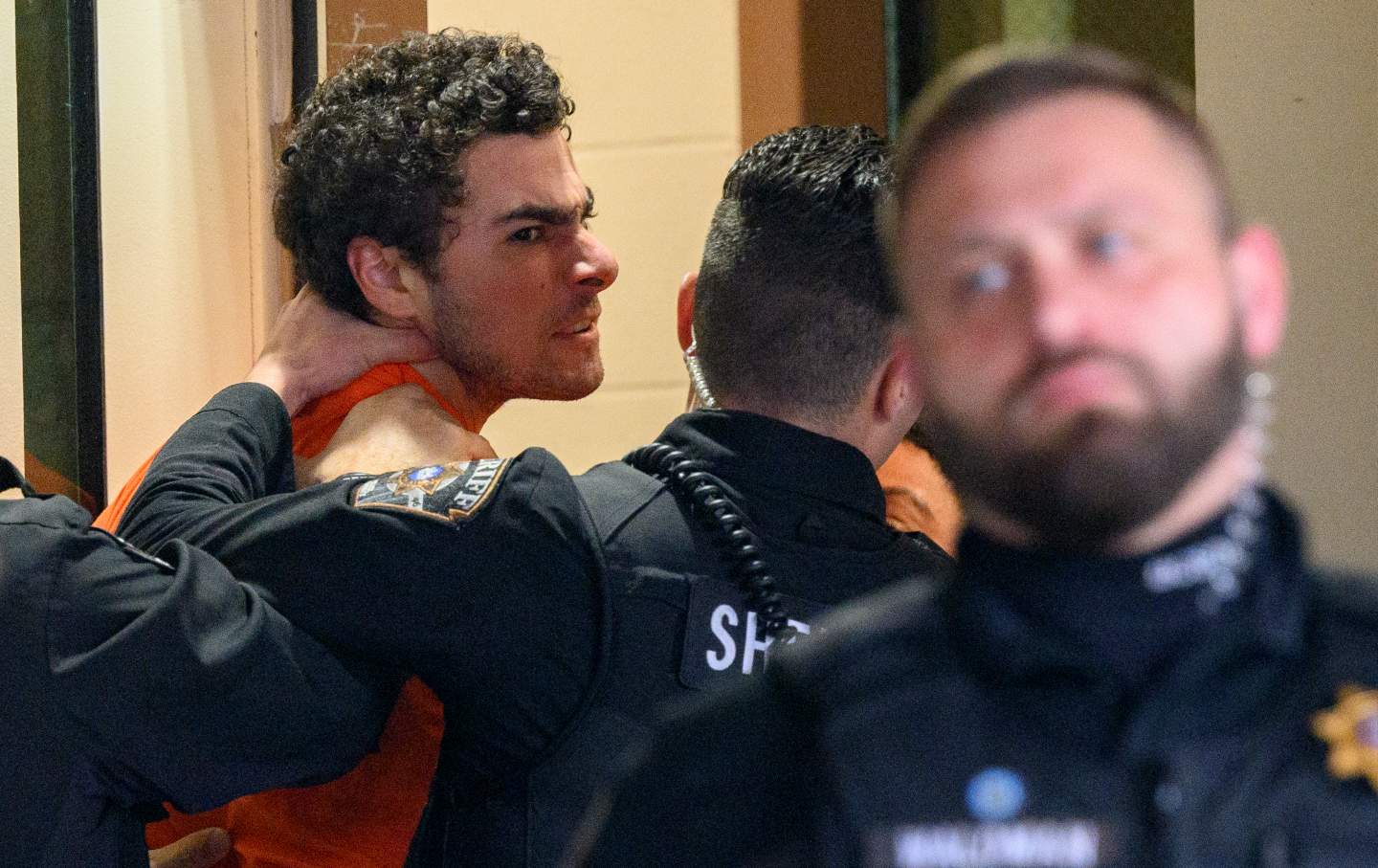
Luigi Mangione Is America Whether We Like It or Not Luigi Mangione Is America Whether We Like It or Not
While very few Americans would sincerely advocate killing insurance executives, tens of millions have likely joked that they want to. There’s a clear reason why.


